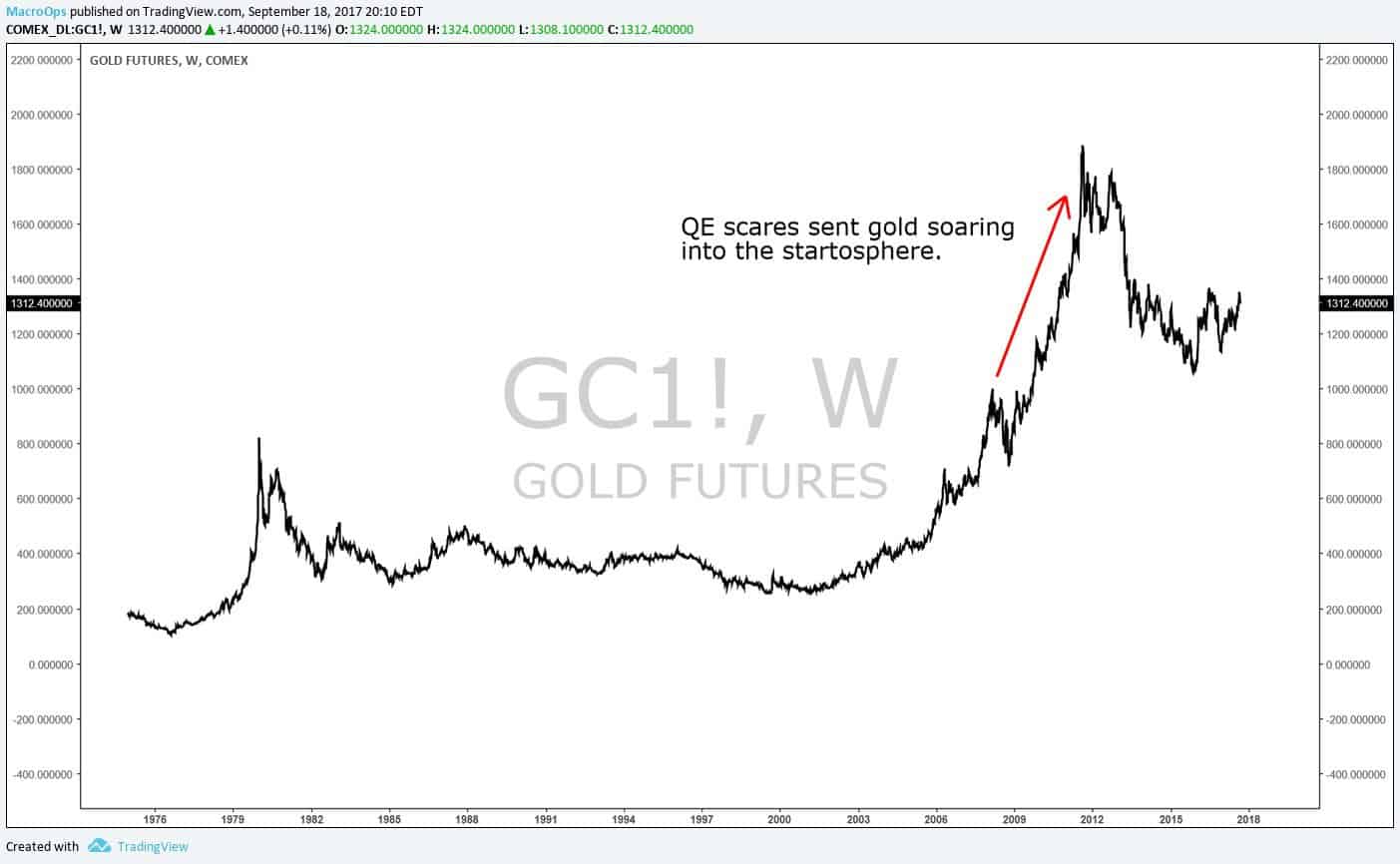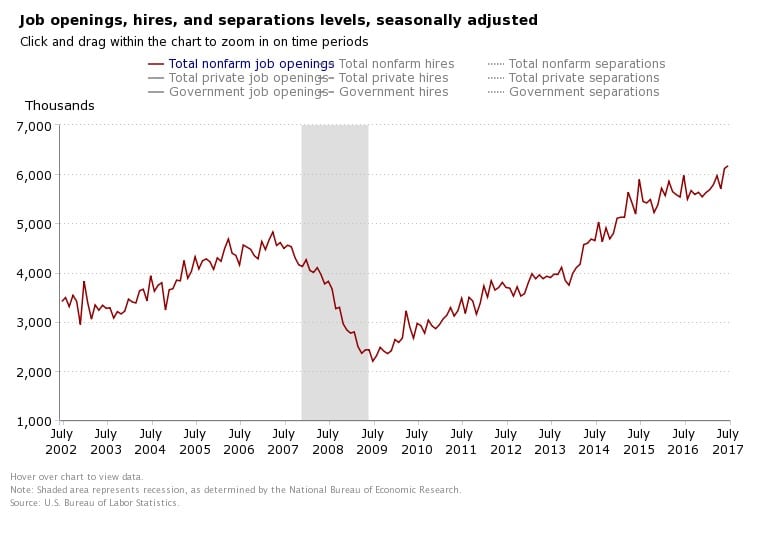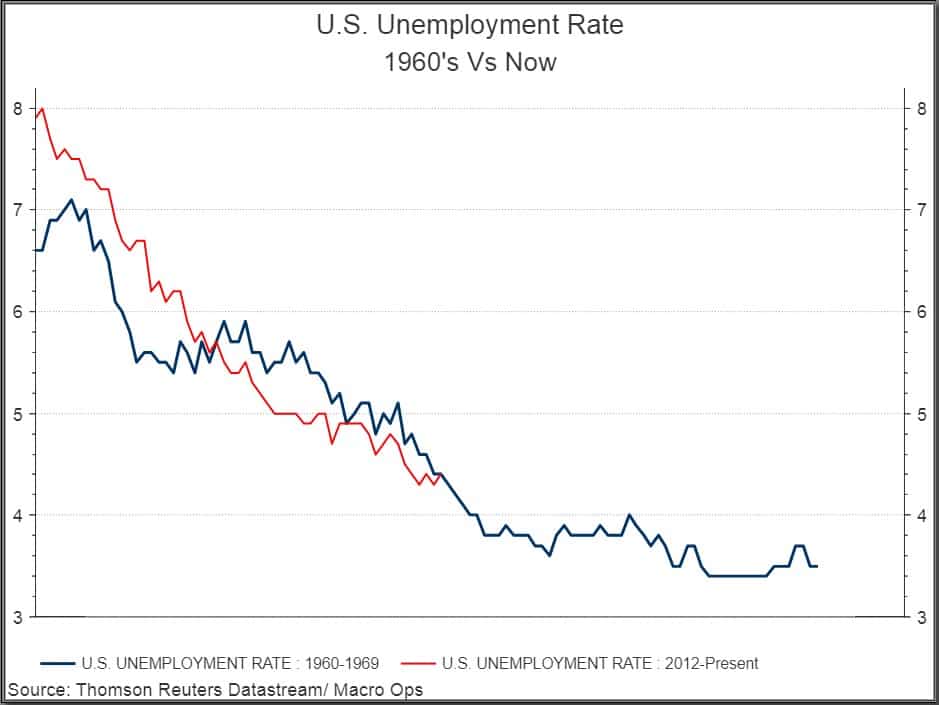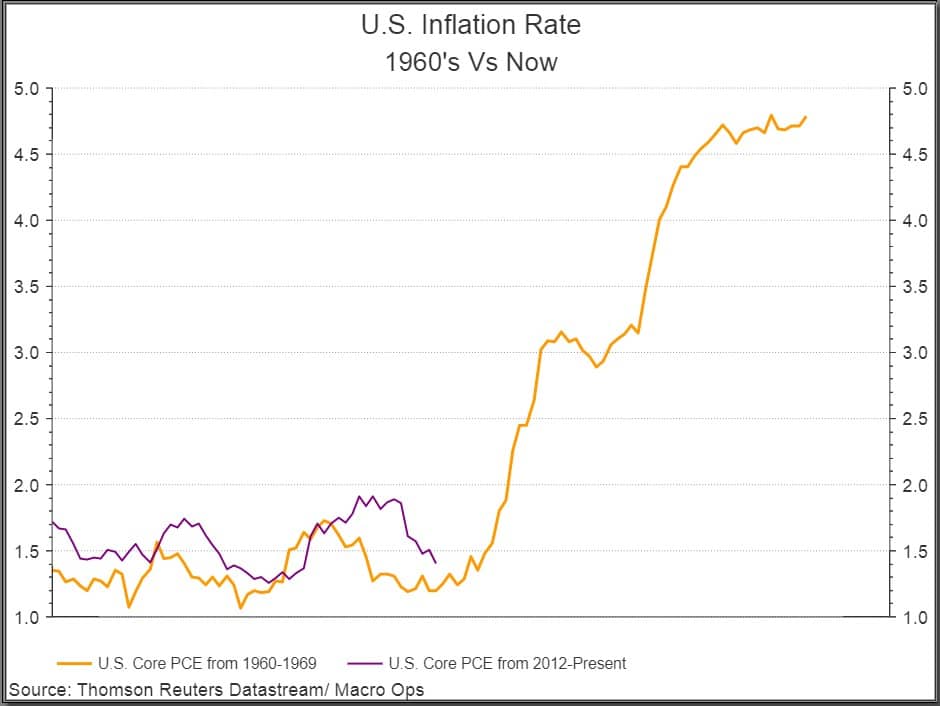Operator Tyler here.
The Gold Bugs were way too early on their inflation call.
Ever since the start of QE, countless Austrian economic gold bugs have been warning about a tidal wave of inflation that will debase our hard earned savings. Their fear mongering is what sent gold up to nearly $2,000 an ounce.
But the inflation never came. The gold bugs were wrong. And anyone who bought into their narrative has had to suffer through a 5-year bear market in gold.
What did the gold bugs overlook that made their prediction so far off the mark?
The labor market.
Economic stimulus can only create inflation if the labor market is tight.
When policy makers try to rev up the economic engine they do so by influencing demand. Tax cuts, QE, rate cuts and government spending are all trying to do the same thing — increase buying power. The more money people have, the more goods and services they can buy.
Now just because there’s more buying power doesn’t mean prices automatically go up. If the economy is recovering from a recession (like it has been since 2008), producers can keep up with this new demand by hiring on a ton of cheap workers. People are willing to work for cheap because they’ll take anything they can get. They just want to be employed. In econo-speak this is what we call a “loose” labor market.
As long as labor remains cheap, inflation stays subdued.
When the economy finally reaches capacity, producers can no longer hire for cheap. Everyone who wants a job already has one. In order for a company to poach an employee from another company they have to offer a ton of money. This is what’s called a “tight” labor market.
Tight labor markets create wage or cost push inflation. Since producers have to pay more for workers they hike their prices to offset the increased costs. These higher prices get passed down to the end buyer creating inflation.
For the last 4-5 years slack in the labor market has counteracted loose Fed policy.
Ever since 2013 all of the potential inflationary impacts of loose Fed policy have been absorbed by the loose labor market. That’s why inflation hasn’t shown up. Instead we got a goldilocks economic environment – modest growth and low inflation.
We’re still in this same modest growth, low inflation environment but with one key difference — the labor market has tightened significantly.
In a tight labor market, the amount of job openings are high, while the unemployment rate is low. This is exactly what we’re seeing now. Total nonfarm job openings are hitting a fresh high.
While unemployment is flirting with its lows.
Companies want employees more than people want jobs. That means employers are going to have to fork over a ton of cash to fill their open slots. Wage hikes means higher prices are right around the corner.
Now’s the time to watch out for the inflation that the gold bugs have been looking for all along.
With a tight labor market, the economy has a much higher chance of overheating and sparking inflation. Serious inflation hasn’t happened for a long time in the U.S. so we have to go all the way back to the 1960’s to see a similar situation.
Back in the early 1960’s JFK took the reins of a sluggish U.S. economy and injected it with a fresh wave of stimulus. These policies worked and the unemployment rate began a nice downtrend — the economy improved.
In 1963 after Kennedy was assassinated LBJ took over. He inherited a true goldilocks economy similar to the one today. Unemployment was in the 4-5% range and inflation never got above 2%.
But instead of letting off the stimulus pedal he stepped on it even harder by pouring money into the Vietnam War effort.
Since the economy was already at full capacity with a tight labor market, all of this extra stimulus began to push prices up dramatically. The inflation rate skyrocketed and remained high for nearly 30 years.
The unemployment and inflation charts from the 1960’s look eerily similar to present day data.
Unemployment is right around that 4-5% level, exactly how it was when LBJ took office.
And the inflation chart looks similar too.
If the 1960’s data is any useful guide, that means we have soaring inflation right around the corner…
What gives us even more confidence in this analog is that President Trump will have no reservations about keeping his foot firmly on the gas pedal.
Trump ran on job creation. He’s even alluded to the fact that if things do get overheated he’s still going pedal to the metal. He repeatedly talked about getting “tired of winning” while on the campaign trail. Actual quote below:
We’re going to win so much. You’re going to get tired of winning. you’re going to say, ‘Please Mr. President, I have a headache. Please, don’t win so much. This is getting terrible.’ And I’m going to say, ‘No, we have to make America great again.’ You’re gonna say, ‘Please.’ I said, ‘Nope, nope. We’re gonna keep winning.
With that attitude, the last thing he’s going to do is “tighten the fiscal belt”, nominate a bunch of Hawks into the Fed, and risk an economic slowdown.
He’s going to fill the FOMC with doves, cut taxes, and try to push through large government funded infrastructure projects.
All of these will tighten up any remaining slack in the labor market and send unemployment down into the 3s just like in the 60’s.
Trump won’t care about the potential impact of runaway inflation. By the time it really starts to become a problem, he’ll have ended his first term and it will be the next guy’s problem.
Investing in this type of economy requires special attention.
A lot of investors will be caught offsides once inflation starts to rear it’s ugly head. Almost all professional money managers today have little to no experience in managing assets through an inflationary environment. We don’t have much real life experience either. But what we do have is a solid framework for how to invest in inflationary environments.
This framework is called the Investment Clock.
Using the investment clock framework we can see that we are exiting the Recovery phase. The economy has improved, unemployment is low, and life is pretty good for most Americans (or at least much better than what it was in 2009).
But now the macro tide has changed and we’re about to sail directly into the Overheating phase of the economic cycle.
Navigating this cycle isn’t difficult if you have the right tools and you know where to look. In fact, it can be one of the most profitable environments for global macro traders like ourselves.
In last month’s Macro Intelligent Report, sent to our premium subscribers, we laid out in detail where our investment dollars are going. Right now we think oil and gas stocks are primed to pop higher as commodities benefit from the impending inflationary tail wind.
And in next month’s MIR we’ll be discussing in more detail how rising inflation will affect fixed income and agricultural stocks. (Hint: Bonds are the last place you’ll want to be.)
The plan is to initiate some brand new positions at the start of October to take advantage of our view.
To learn more about how inflation affects markets, check out our Trading Handbook here.
Summary:
- The gold bugs were wrong in 2012.
- Economic stimulus only creates inflation if the labor market is tight.
- Now that the labor market is tight, there is a high probability of rising inflation in the future.
- Commodities tend to perform best in this environment.
















